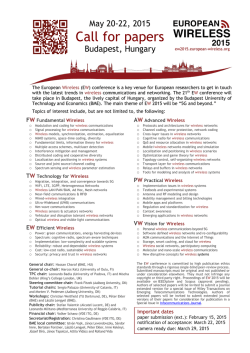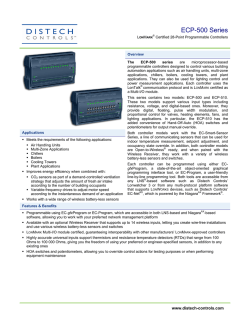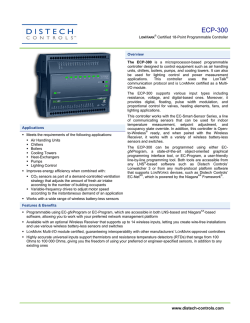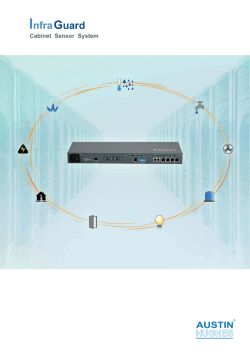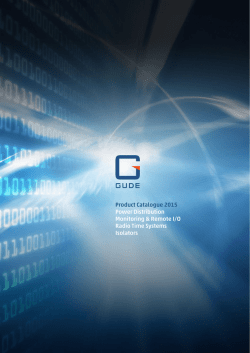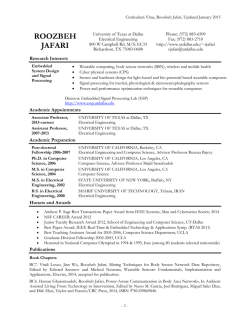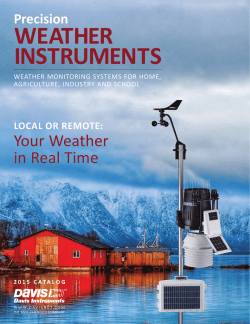
Call for Papers for Ad-hoc and Sensor Networking Symposium
Call for Papers for Ad-hoc and Sensor Networking Symposium Scope and Motivation: An ad-hoc network is a system of wireless nodes dynamically self-organizing in arbitrary and temporary network topologies. Nodes in an ad-hoc network can communicate without a pre-existing communication infrastructure. In recent years, ad-hoc networks have been attracting increased attention from the research and engineering communities, motivated by applications like digital battlefield, asset tracking, air-borne safety, situational awareness, and border protection. Such networks are designed to operate in widely varying environments. Therefore, dynamic topologies, bandwidth constraints, energy-constrained operations, wireless vulnerabilities, and limited physical security are among the characteristics that differentiate mobile ad-hoc networks from fixed multihop networks. A Wireless Sensor Network (WSN) is a wireless network consisting of large populations of spatially distributed sensor nodes to cooperatively monitor physical or environmental conditions. Wireless sensor networks have many useful applications such as hostile environment surveillance, industrial process monitoring, environment and habitat monitoring, healthcare applications, home automation, and traffic control. Recently, we have experienced an immense growth of interest on exciting concepts such as the Internet of Things (IoT), the Smart Cities and the Machine-toMachine Communications (M2M) mainly focused on the 5th Generation (5G) Mobile Systems. Both ad-hoc and sensor networks are characterized by their dynamic nature, which requires them to be adaptive to changes in the application environment, task objectives, and topological changes, among others. There is a growing number of real applications using wireless ad-hoc and sensor networks, and these applications are being taken seriously by the industries. As a result, the last few years have witnessed the development of many innovative solutions for ad-hoc and sensor networks that are maturing to the level of commercialization and standardization. However, numerous challenges remain for the implementation of practical solutions that operate robustly, securely, and efficiently. The Ad-hoc and Sensor Networking Symposium of GLOBECOM 2015 aims at providing a forum for sharing ideas among researchers and practitioners working on state-of-the-art solutions related to ad-hoc and sensor networks. Main Topics of Interest: The Ad-hoc and Sensor Networking Symposium of Globecom 2015 is soliciting papers that describe original and unpublished contributions. Topics of interest include, but are not limited to: • • • • • • • • • • • • • • • • • • • • • • • • • • • • • • • • • • • • • • • • • • • • • Wireless sensor and actuator networks New and unconventional applications of ad-hoc and sensor networks Novel paradigms, architectures and operation models Protocols, architectures and applications for the Internet of Things Machine-to-Machine (M2M) communications Wireless multimedia and 3-D sensor networks Underwater and underground sensor networks Body Area sensor networks Cognitive radio networks in multi-hop environments Wireless mesh and community networks Wireless PANs and LANs Pervasive and wearable computing RFID systems Delay-tolerant ad-hoc networks Self-organization and autonomic networking Vehicular networks Co-existence issues of hybrid networks Wireless, ad-hoc, and sensor devices Ultra wide band technology for ad-hoc and sensor networks MAC protocols for ad-hoc and sensor networks Frequency and channel allocation algorithms Quality of Service provision and management Standardization activities for ad-hoc and sensor networks Energy saving and power control protocols for ad-hoc and sensor networks Energy scavenging technologies Service discovery in ad-hoc and sensor networks Location and context aware services Scheduling and resource management algorithms Deployment and coverage analysis of sensor networks Localization in ad-hoc networks Routing and multicasting protocols Topology control and management Sensor fusion and synergy In-network processing and data storage Fault-tolerance and traffic reliability issues Cross-layer design and optimization Mobility management and modeling Synchronization and coordination techniques in ad-hoc and sensor networks Security for ad-hoc and sensor networks Participatory and public sensing systems Performance evaluation and modeling Simulation methodologies and tools for wireless ad-hoc and sensor networks Integrated simulation and measurement based evaluation Experimental prototypes and testbeds Decentralized combinatorial optimization Sponsoring Technical Committees: • • Ad-hoc and Sensors Networks Wireless Communications How to Submit a Paper: The IEEE Globecom 2015 website provides full instructions on how to submit papers. You will select the desired symposia when submitting. The paper submission deadline is April 1, 2015. Submissions will be accepted through EDAS. All submissions must be written in English and be at most six (6) printed pages in length, including figures. Symposium Co-Chairs: • • • • Hossam Hassanein, Queens University, Canada, [email protected] Periklis Chatzimisios, Alexander TEI of Thessaloniki, Greece, [email protected] Song Guo, Aizu University, Japan, [email protected] Kun Yang, University of Essex, UK, [email protected] Biographies: Hossam Hassanein is the founder and director of the Telecommunications Research Lab (TRL) at Queen's University School of Computing, with extensive international academic and industrial collaborations. Dr. Hassanein is a leading authority in the areas of broadband, wireless and mobile networks architecture, protocols, control and performance evaluation. His record spans more than 500 publications in journals, conferences and book chapters, in addition to numerous keynotes and plenary talks in flagship venues. Dr. Hassanein has received several recognitions and best papers awards at top international conferences. He is a senior member of the IEEE, and is a former chair of the IEEE Communication Society Technical Committee on Ad hoc and Sensor Networks (TC AHSN). Dr. Hassanein is an IEEE Communications Society Distinguished Speaker (Distinguished Lecturer 2008-2010). Periklis Chatzimisios (IEEE SM’12) serves as an Associate Professor at the Alexander TEI of Thessaloniki - ATEITHE (Greece). Recently, he has been a Visiting Academic/Researcher in Massachusetts Institute of Technology (USA) and University of Toronto (Canada). Since 2010, Dr. Chatzimisios serves as a Member of the Standards Development Board for the IEEE Communication Society (ComSoc) and he has participated as Speaker/Panelist in topics related to standardization. He also serves as Secretary of the IEEE Technical Committee on Cognitive Networks (TCCN) and as Secretary of the IEEE 1907.1 Working Group. Dr. Chatzimisios has served as Organizing/TPC Committee member for many conferences and Founder/Organizer/Co-Chair for many Workshops which are co-allocated with major IEEE conferences. He also holds editorial board positions for several IEEE/non-IEEE journals and he is acting as Director for the E-letter of the IEEE Technical Committee on Multimedia Communications (MMTC). He is the co-author/editor of 8 books and more than 85 peerreviewed papers and book chapters. His published research work has received more than 1300 citations by other researchers. He received his Ph.D. from Bournemouth University, UK (2005) and his B.Sc. from Alexander TEI of Thessaloniki, Greece (2000). His research interests are in performance evaluation and standardization activities of mobile/wireless communications, Quality of Service and vehicular networking. Song Guo received the PhD degree in computer science from University of Ottawa, Canada. He is currently a Full Professor at the University of Aizu, Japan. His research interests are mainly in the areas of performance analysis for wireless networks and distributed systems. He has published over 250 papers in referred journals and conferences in these areas and received three IEEE/ACM best paper awards. Dr. Guo currently serves as Associate Editor of IEEE TPDS and IEEE TETC with duties on emerging paradigms in computational communication systems. He has also been in organizing and technical committees of numerous international conferences. Dr. Guo is a senior member of the IEEE and the ACM. Kun Yang is currently a Full Professor in School of Computer Science & Electronic Engineering (CSEE) and the Head of the Network Convergence Laboratory (NCL), University of Essex. He is a Fellow of IET, Senior Member of IEEE, Member of IEEE ComSoc and Member of ACM. He got his PhD degree in network engineering from the Department of Electronic & Electrical Engineering, University College London (UCL). His MSc and BSc degrees were both from Department of Computer Science, Jilin University (JLU), China. After graduating from MSc study, he took up a lectureship in the Department of Computer Science, Jilin University. At 2000 he joined in Networks & Services Group at Department of Electronic & Electrical Engineering, University College London as a research fellow. He then took a lectureship in University of Essex. His main research interests include wireless networks, heterogeneous wireless networks, network convergence, IP network management, Future Internet technologies, pervasive service engineering, mobile cloud computing. TPC Members (To be updated later) Dharma Agrawal, University of Cincinnati, USA Toufik Ahmed, University of Bordeaux-1 / CNRS-LaBRI, France Nils Aschenbruck, University of Osnabrück, Germany Chadi Assi, Concordia University, Canada Leonardo Badia, Università degli Studi di Padova, Italy Stefano Basagni , Northeastern University, USA Paolo Bellavista, University of Bologna, Italy Jalel Ben-Othman, University of Paris 13, France Mauro Biagi, Università La Sapienza di Roma, Italy Aggelos Bletsas, Technical University of Crete, Greece Gennaro Boggia, Politecnico di Bari, Italy Luciano Bononi , University of Bologna, Italy Azzedine Boukerche, University of Ottawa, Canada Torsten Braun, University of Bern, Switzerland Chiara Buratti, University of Bologna, Italy Lin Cai, Huawei, USA Feng-Tsun Chien, National Chiao Tung University, Taiwan Francesco Chiti, Università degli Studi di Firenze, Italy Garth Crosby Southern Illinois University Carbondale, USA Felipe Cruz-Pérez, Cinvestav-IPN, Mexico Haipeng Dai, Nanjing University, P.R. China Grzegorz Danilewicz, Poznan University of Technology, Poland Luca De Nardis, University of Rome La Sapienza, Italy Der-Jiunn Deng, National Changhua University of Education, Taiwan Guoru Ding, PLA University of Science and Technology, P.R. China Rui Dinis, Instituto de Telecomunicacoes, Portugal Karim Djouani, University Paris Est Créteil (UPEC), South Africa Octavia Dobre, Memorial University of Newfoundland, Canada Hacene Fouchal , Université de Reims Champagne-Ardenne, France Yacine Ghamri-Doudane, University of la Rochelle, France Athanassios Iossifides, Alexander ΤΕΙ of Thessaloniki, Greece Victor Leung, The University of British Columbia, Canada Cheng Li, Memorial University of Newfoundland, Canada Jaime Lloret, Universidad Politécnica de Valencia, Spain Maode Ma, Nanyang Technological University, Singapore Amine Maaref Huawei Technologies Canada, Canada Petri Mähönen, RWTH Aachen University, Germany Ioanis Nikolaidis, University of Alberta, Canada Hongchi Shi, Texas State University, USA Yi Shi, Virginia Tech, USA Isabelle Simplot-Ryl, INRIA Lille Nord - Europe, France M. Reza Soleymani, Concordia University, Canada Wei Song, University of New Brunswick, Canada Wen-Zhan Song, Georgia State University, USA Burkhard Stiller, University of Zürich, Switzerland Ivan Stojmenovic, University of Ottawa, Canada Radu Stoleru, Texas A&M University, USA Tim Strayer, BBN Technologies, USA Zhou Su, Waseda University, Japan Weifeng Sun, Dalian University of Technology, P.R. China Maen Takruri, American University of Ras Al Khaimah, UAE Daniele Tarchi University of Bologna Italy Ilenia Tinnirello, University of Palermo, Italy Sherali Zeadally, University of Kentucky, USA Yaxiong Zhao, Google USA
© Copyright 2026
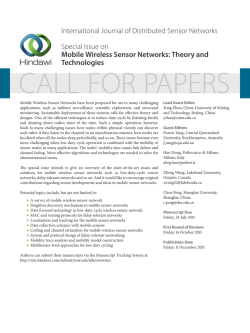
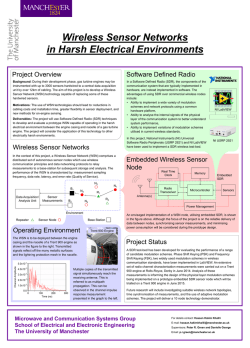
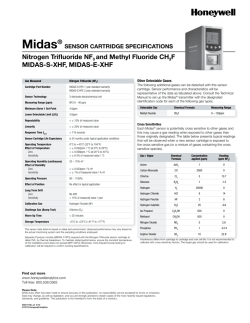
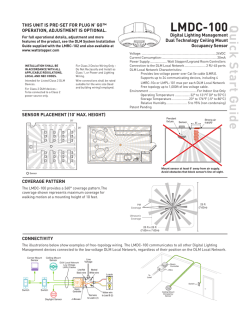
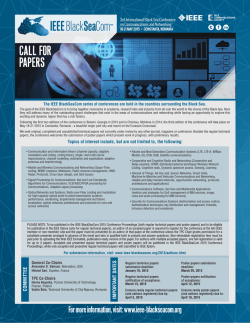
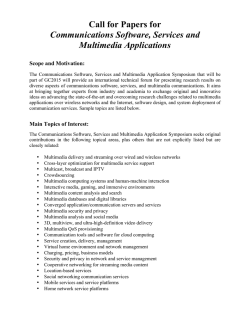

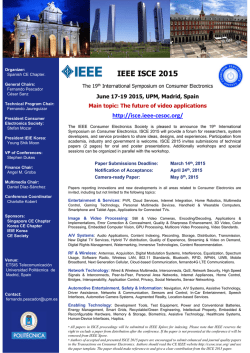

![[PDF] NS Series Network Sensors Catalog Page](http://s2.esdocs.com/store/data/000484399_1-7638be45b4871a11b0b359cb4bdd6b58-250x500.png)
